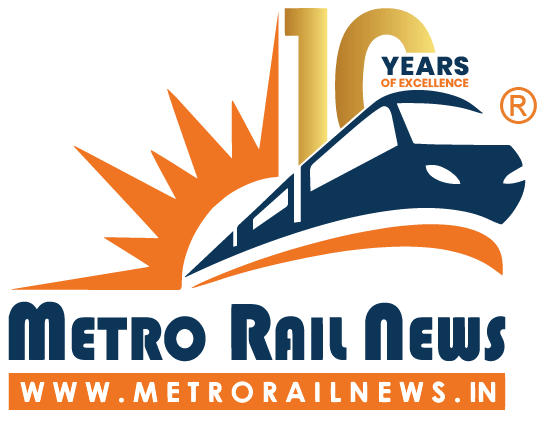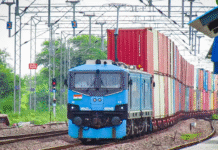Introduction
Over the decades, the metropolitan cities witnessed a major increase in population growth due to rapid urbanisation. This rapid population growth placed immense pressure on existing urban infrastructure and transportation systems. Traditional modes of transport, primarily road-based, have become increasingly inadequate to handle the sheer volume of commuters in cities.
In response to these challenges, the metro system emerged and evolved as a crucial transportation solution. However, the Metro systems started facing escalating passenger demand, the necessity for higher service frequencies, and the requirement to uphold stringent safety protocols while simultaneously optimising operational efficiency and minimising environmental impact.
Traditional traffic management methodologies, often characterised by reliance on manual interventions, static timetables, and limited real-time responsiveness, were demonstrably inadequate to address these complex and dynamic demands. This necessitated the adoption of data-driven solutions like Smart Traffic Management Systems (STMS), which harness the power of emerging modern technologies like Artificial Intelligence and Machine Learning to establish intelligent, adaptive, and resilient rail networks.
This article studies the critical role of Smart Traffic Management Systems in maximising the use of rail infrastructure while navigating through the roadblocks that impede the effective implementation of these systems.
Integrating Intelligent Technologies for Resilient and Responsive Metro Traffic Management
The smart traffic management systems, particularly within metro systems, incorporate a range of technologies such as Artificial Intelligence (AI), the Internet of Things (IoT), and Cloud Computing to efficiently manage and regulate train operations, passenger flow, and other critical infrastructure components. Additionally, the traffic management system facilitates real-time monitoring and reporting capabilities, enabling the detection and response to any disruptions or incidents that may arise. The inclusion of smart traffic management systems within metro systems enables the regulation of train speed, the maintenance of safe distances between trains, and the coordination of train movements, thereby preventing collisions and optimising traffic circulation.
Core Technologies Enabling Smart Traffic Management System
Smart traffic management systems in metro networks effectively integrate Artificial Intelligence (AI), Internet of Things (IoT), and Cloud Computing technologies to manage train operations, passenger flow, and infrastructure components.
- Artificial Intelligence: In metro systems, AI is employed for predictive maintenance, anomaly detection, and optimising train schedules. For instance, AI uses real-time data to identify patterns that could indicate safety risks.
- IoT Devices: The concept of the “Internet of Trains” is an extension of the Internet of Things (IoT), which is being used specifically for rail transportation. IoT devices, such as sensors on trains and tracks, collect and transmit real-time data to facilitate continuous monitoring of assets in rail infrastructure. These devices are crucial for predictive maintenance as they detect anomalies before they lead to failures.
Examples:
- Systems such as the Duos Technologies Railcar Inspection Portal (RIP) employ AI to capture and analyse 360-degree images of train cars while operating at standard speeds.
- The Hyderabad Metro Rail (HMR) Managing Director, N.V.S. Reddy, stated that the Hyderabad Metro is currently using AI and IoT for ‘predictive maintenance’ to bring down costs.
- Common Asset Management System for Mumbai Metro Line 3:In July 2021, Mumbai Metro Rail Corporation (MMRC) collaborated with Bahwan CyberTek (BCT) to implement a Common Asset Management System (CAMS) for Mumbai Metro Line 3. This system is designed to manage a wide range of assets, including rolling stock, tracks, power supply systems, traction systems, signalling and control systems, platform screen doors, telecommunication systems, plants and equipment, automated fare collection systems, escalators, lifts, and tunnel ventilation systems.
- Big Data Analytics: Big Data analytics processes substantial volumes of traffic data collected from Internet of Things (IoT) sensors and various other sources to extract actionable insights. These analytics facilitate predictive maintenance of infrastructure and vehicles, thereby enhancing overall system reliability and operational efficiency.
Example:
- ITMS System: To modernise rail infrastructure, Union Railway Minister Ashwini Vaishnaw announced the deployment of the Integrated Track Monitoring System across the entire rail network in India. This system uses Track Recording Cars (TRCs) equipped with sophisticated sensors to collect data and monitor and assess track conditions in real-time at speeds ranging from 20–200 km/h. The data is processed using Big Data analytics to identify potential issues and plan maintenance before failures occur.
- Cloud Computing in Rail Infrastructure: Cloud computing encompasses the provision of computing services, including servers, storage solutions, databases, networking capabilities, software applications, and sophisticated technologies such as data analytics and artificial intelligence, delivered via the internet.This model offers scalable and flexible infrastructure for processing and analysing large volumes of data, which is essential for modern rail systems. Cloud platforms enable rail operators to store and process massive datasets which is generated from various sources, including ticketing systems, train operations, passenger flow sensors, CCTV, and maintenance records.
One of the main benefits of cloud computing is its ability to scale resources on demand. This eliminates the need for costly on-premises infrastructure and provides flexibility. This allows rail operators to adapt their resources as required, based on operational demands.
Example
- Data collected from various systems, such as ticketing, train operations, passenger flow sensors, CCTV cameras, and maintenance records, can be archived in a cloud database. This configuration makes better analysis and management of the operations possible.
These technologies work in conjunction with essential systems, including the signalling system, Public Information System, and Ticketing System, which will be discussed in the subsequent sections.
- Signalling System: Enabling Safe and Efficient Train Movements
- The signalling system in a metro network is a crucial component that ensures the safe and efficient movement of trains by preventing collisions between trains, over-speeding, and derailments.
- The signalling system uses a combination of wayside and onboard equipment like signals, train detection, interlocking, and automatic protection systems to ensure train safety and adherence to schedules.
- In the era of smart metro systems, Communications-Based Train Control (CBTC) signalling system has emerged as a better alternative for effectively utilising the full capacity of rolling stock and associated rail infrastructure. CBTC increases the reliability and flexibility of train operations by facilitating real-time communication between trains and infrastructure.
Example:
India’s first indigenously developed Signalling System: In February 2023, the Delhi Metro launched the country’s first indigenously developed signalling system, the Automatic Train Supervision system, i-ATS. This system was jointly developed by Bharat Electronics Limited (BEL) and DMRC under the ‘Make in India’ and ‘AatmaNirbhar Bharat’ initiatives. The system has been deployed on the Red Line corridor.
- Provision of CBTC Signalling System for Delhi Metro Phase 4: Alstom is equipping Delhi Metro Phase 4’s Line 10 (Golden Line) and the Line 7 extension with its scalable CBTC system, which will operate in conjunction with its Automatic Train Supervision (ATS) system.
- The Mumbai Metro’s Aqua Line has also been equipped with Alstom’s Communications-Based Train Control (CBTC) System.
- The Bengaluru Metro Phase 2, Reach 6, 2A and 2B will deploy a fully automated Communications-Based Train Control (CBTC) signalling system provided by Alstom.
Inclusion of Modern Solutions to Streamline Passenger Flow
- Ticketing Systems
- The modernised ticketing system is integral to the Traffic Management framework. The implementation of advanced payment solutions automates the payment process, facilitates cashless transactions, and enhances the efficiency of transit operations.
- These innovative payment solutions eliminate the necessity for cash handling and manual ticketing, thus saving time for passengers and aiding in the management of passenger flow, which in turn ensures seamless operational functionality.
Examples
- Contactless Smart Cards: These smart cards allow passengers to preload monetary value, enabling tap-in and tap-out transactions at the start and conclusion of their journeys
- Mobile Ticketing and QR Codes: Current automated fare collection (AFC) systems now offer ticketing through mobile applications that generate QR codes, streamlining the purchasing process while enhancing user experience.
| Case Study The Delhi Metro Rail Corporation (DMRC) has implemented a mobile-based QR-ticketing system, which enables passengers to purchase tickets online. This innovation diminishes the dependence on physical ticketing methods and effectively alleviates congestion at station queues. |
- Passenger Information Systems (PIS) in Metro Networks
Metro systems in cities like Delhi, Mumbai, and Bengaluru have adopted Iot-integrated PIS to provide real-time updates on train arrivals, crowd density, and platform information, to optimise passenger experience and operational efficiency.
Example:
- In March 2025, the Delhi Metro Rail Corporation (DMRC) announced the upgradation of its Passenger Information Display System (PIDS) to enhance the passenger experience with the latest technology. The upgrade will involve 110 units across 18 stations on the Yellow Line.
- The new display units are made to accommodate ambient light levels, varying brightness to provide maximum visibility without being uncomfortable. The units are also flexible, able to display static and dynamic messages, images, and videos.
Impacts of the Traffic Management Systems
1. Predictive Maintenance: One of the primary advantages of Smart Traffic Management Systems is their ability to facilitate predictive maintenance. Internet of Things (IoT) sensors are deployed on critical components, including tracks, wheels, and signalling systems, to collect real-time data regarding their condition.
AI algorithms are utilised to analyse this data for analysis and to predict potential issues, thereby enabling predictive maintenance.. This proactive approach allows for the identification of potential issues before they turn into failures, thereby minimising disruptions to traffic flow. The predictive maintenance extends the lifespan of infrastructure and rolling stock.
Example
The metro systems in Hong Kong utilise predictive maintenance strategies to prevent unforeseen breakdowns and to minimize delays and operational disruptions.
- The fourth phase of the Delhi Metro is planning to integrate AI into its operations and project management processes.
- Singapore’s Circle Line (CCL), recognised as the world’s first fully automated underground Mass Rapid Transit (MRT) line, utilises a Condition Monitoring System to continuously gather data regarding the equipment on the trains, facilitating ongoing monitoring of their condition and supporting predictive maintenance efforts.
2. Streamlined Passenger Experience: Smart Traffic Management Systems (STMS) are established to enhance the efficiency of train and passenger flow within metro networks. These systems utilize advanced technologies to monitor, control, and forecast traffic patterns, resulting in improved operational efficiency.
Example
- Innovative solutions such as Smart Ticketing at Kochi Metro, Delhi Metro facilitate a seamless ticketing process.. This advancement contributes to a more convenient, efficient, informative, secure, and environmentally sustainable experience for metro passengers.
3. Improved Safety: Smart traffic management systems enhance safety through the real-time analysis of data obtained from various sources, including CCTV networks and signalling systems. Advanced AI algorithms are capable of detecting casualties, accidents, or security threats identified through video analytics and signalling information, thereby providing immediate alerts and facilitating appropriate action.
Example
- Integration of signalling systems like CBTC facilitates the movement and coordination between two rolling stocks to avoid train collision and enhances operational efficiency.
Roadblocks in Enabling the Smart Traffic Management Systems
1. Cost Effectiveness: The issue of cost-effectiveness emerges as a barrier to the establishment and maintenance of smart traffic management systems within metro operations, primarily due to the substantial initial capital investment required for complex technologies such as sensors, communication networks, and centralised control centres. The complexities associated with integrating new systems into existing infrastructure, the necessity for scalability, and the imperative for robust cybersecurity measures further exacerbate these financial challenges.
2. Prone to Cyber Attacks: Although traffic management systems offer numerous advantages, including optimised train schedules, enhanced safety, and efficient passenger flow, they are notably prone to cyber attacks due to their increasing dependence on interconnected digital technologies. Modern metro systems encompass various subsystems—such as signalling, train control, and communication networks—all interconnected through Information Technology (IT) and Operational Technology (OT) networks. This interconnectedness results in a broader attack surface for potential threats.
3. Integration with Conventional System: The integration of traffic management systems with established conventional systems presents a considerable challenge due to technical interoperability issues stemming from diverse technologies, interface complexities, and data integration demands, particularly under real-time operational constraints. Furthermore, operational challenges, including system migration, personnel training, the long-term maintenance of disparate systems, and the assurance of scalability, contribute to the overall complexity of the integration process.
Conclusion
Smart Traffic Management Systems signify a transformative advancement in the operation and management of contemporary metro systems. By using core technologies such as Artificial Intelligence, the Internet of Trains, Big Data Analytics, Cloud Computing, advanced signalling, and modern ticketing systems, these systems provide substantial benefits, including predictive maintenance, enhanced passenger experience, and improved safety. These data-driven solutions empower metro operators to proactively address potential issues, optimise passenger flow, and ensure safer operations. However, the widespread adoption and successful implementation of Smart Traffic Management Systems are accompanied by notable challenges. The considerable costs associated with deployment and maintenance, the persistent risk of cyber attacks on interconnected systems, and the complexities inherent in merging these advanced technologies with existing conventional infrastructures pose significant obstacles.






